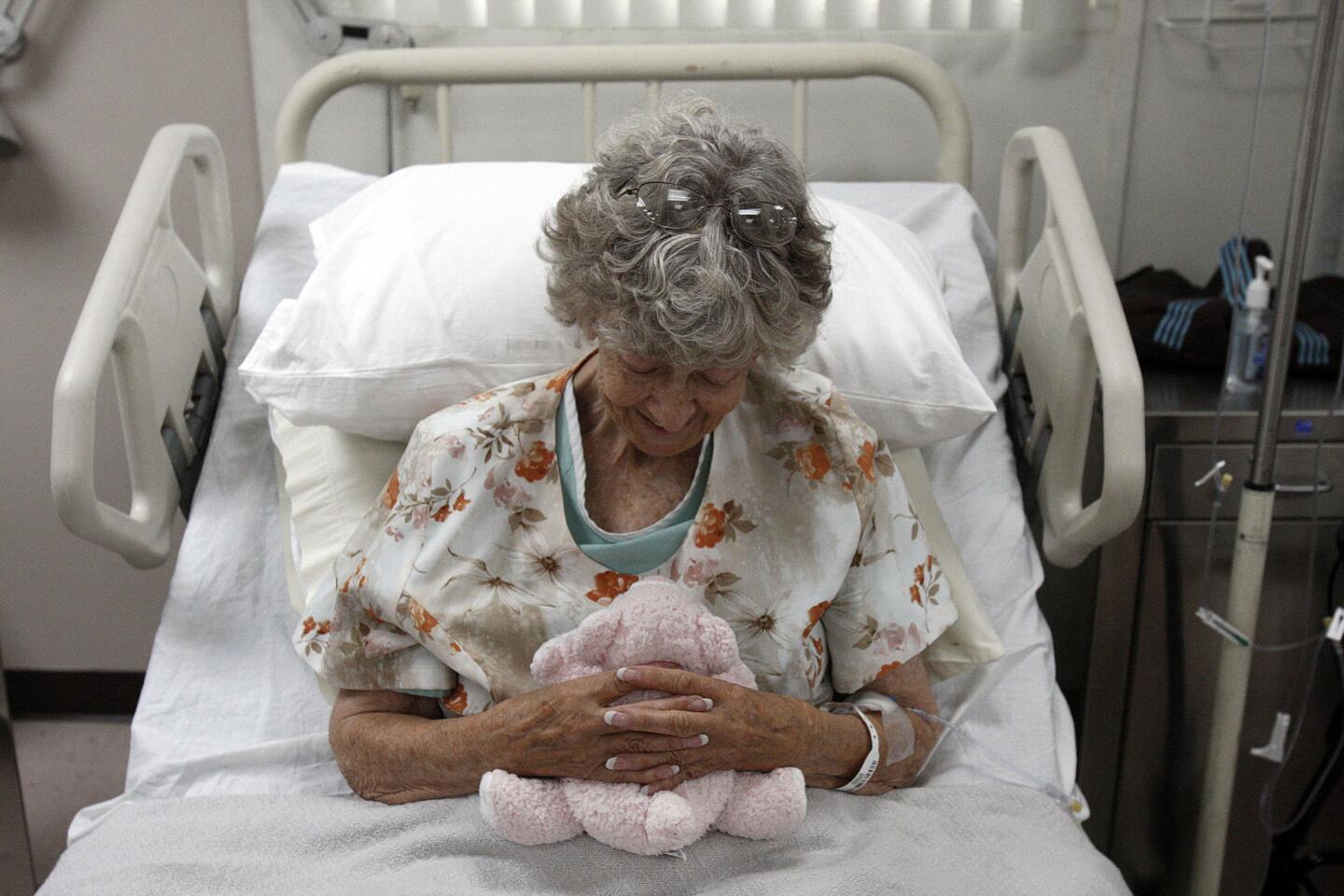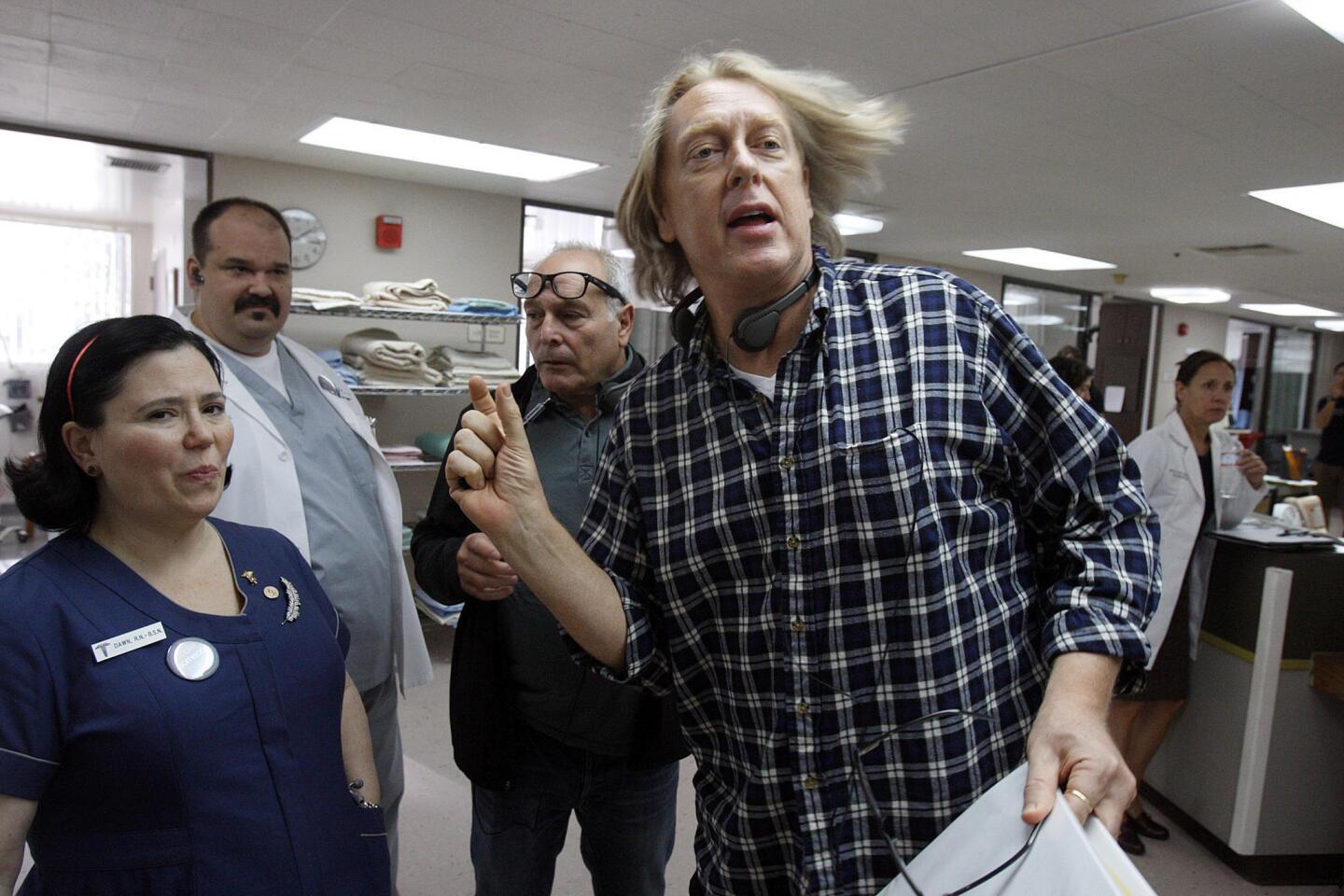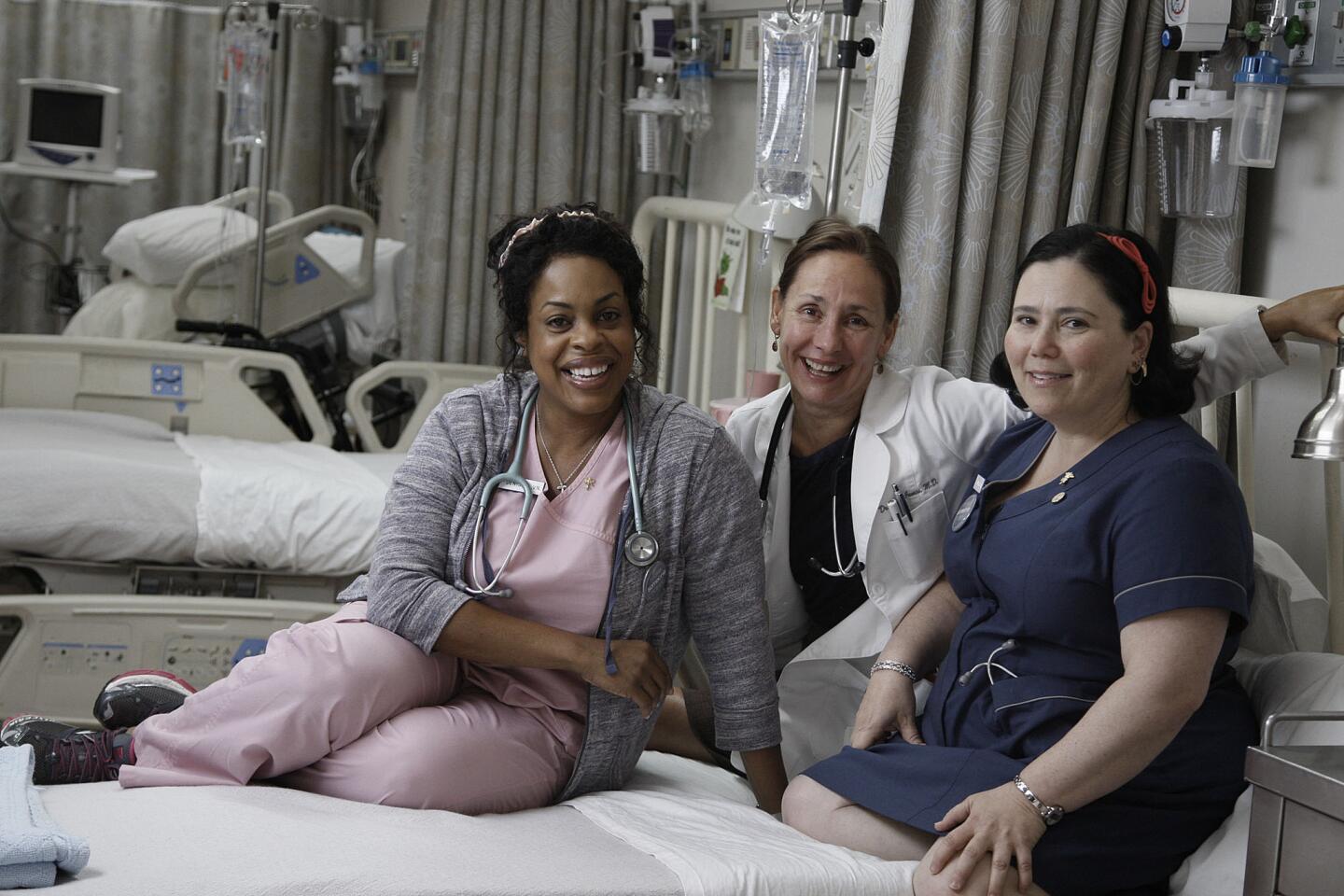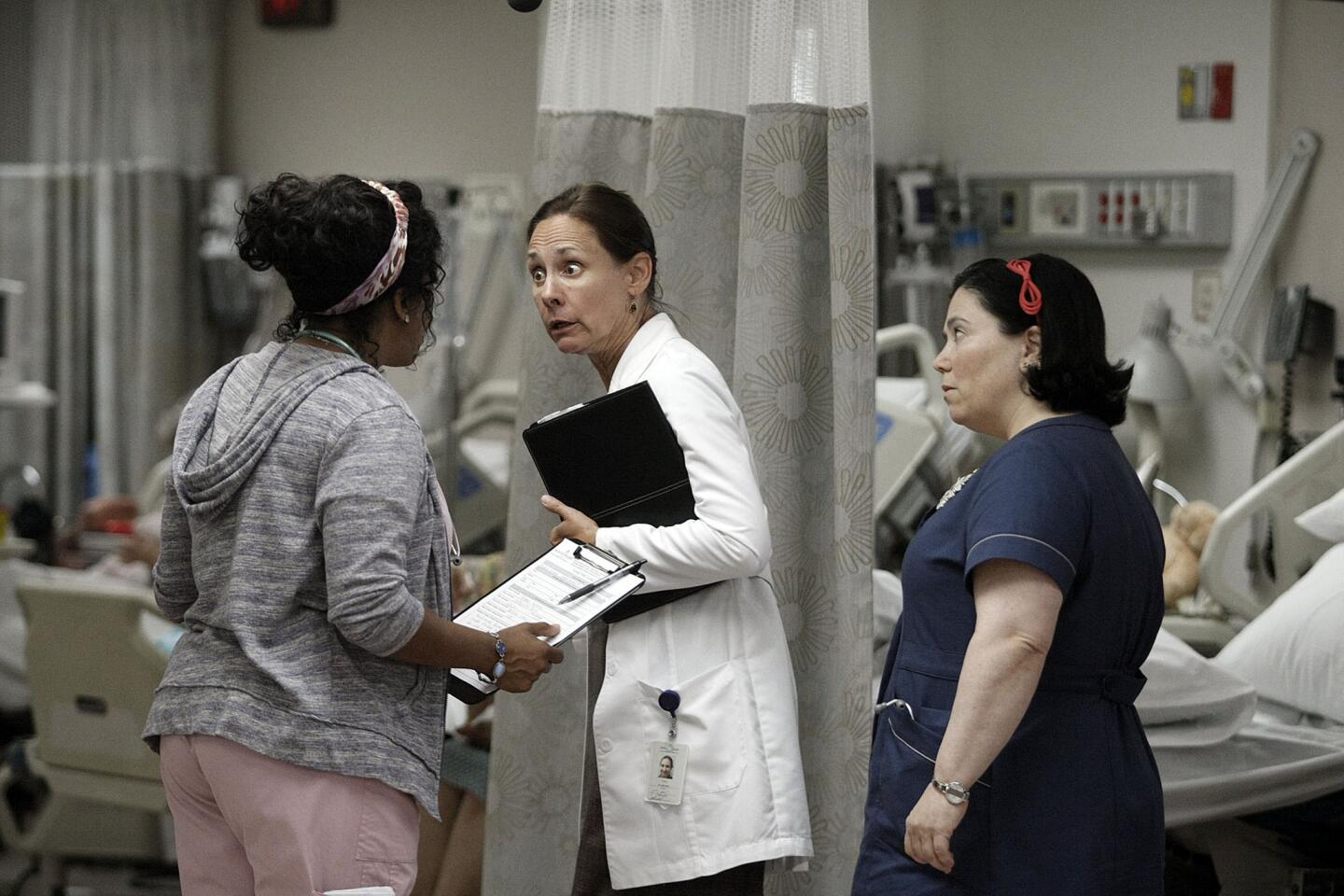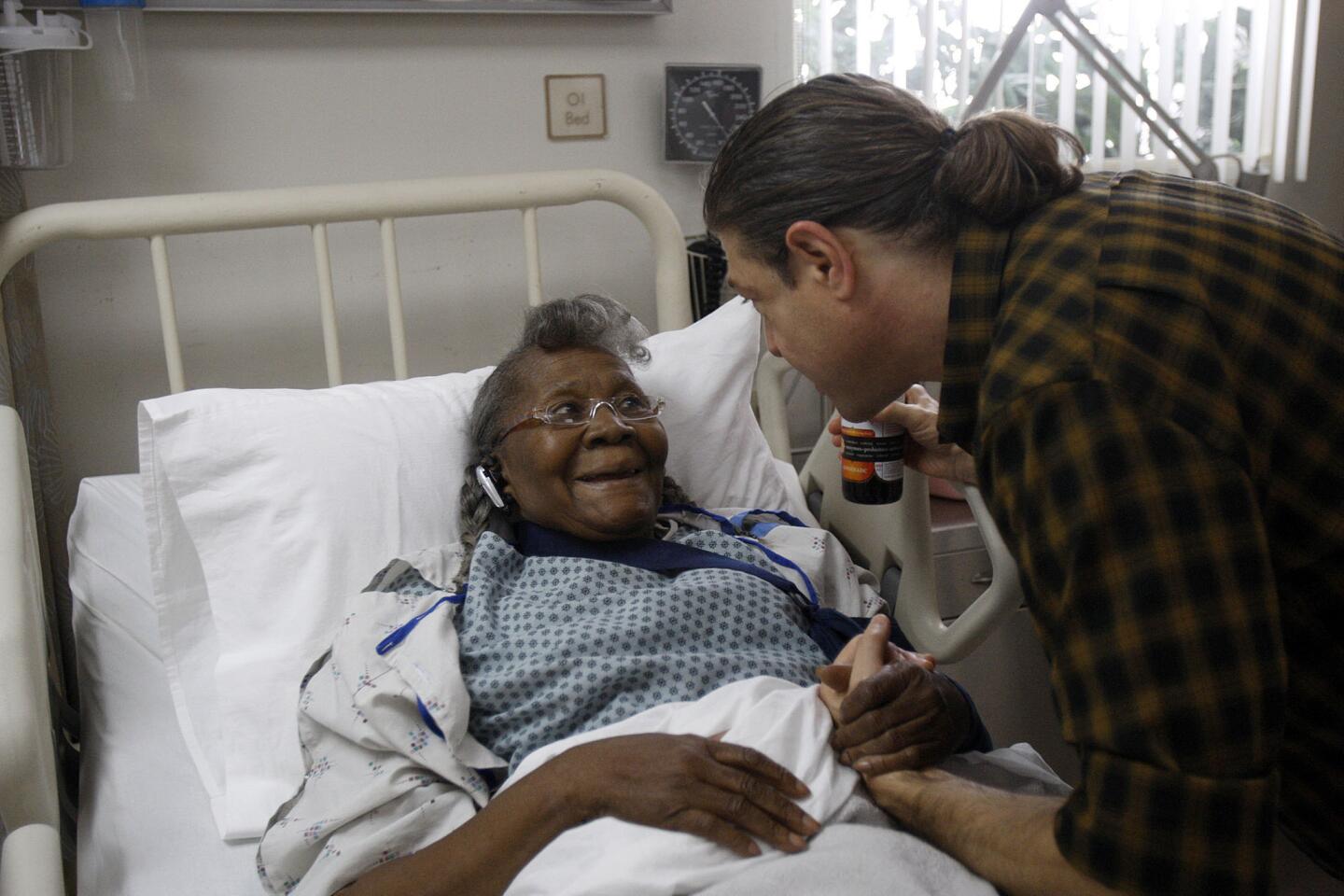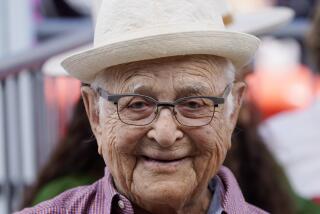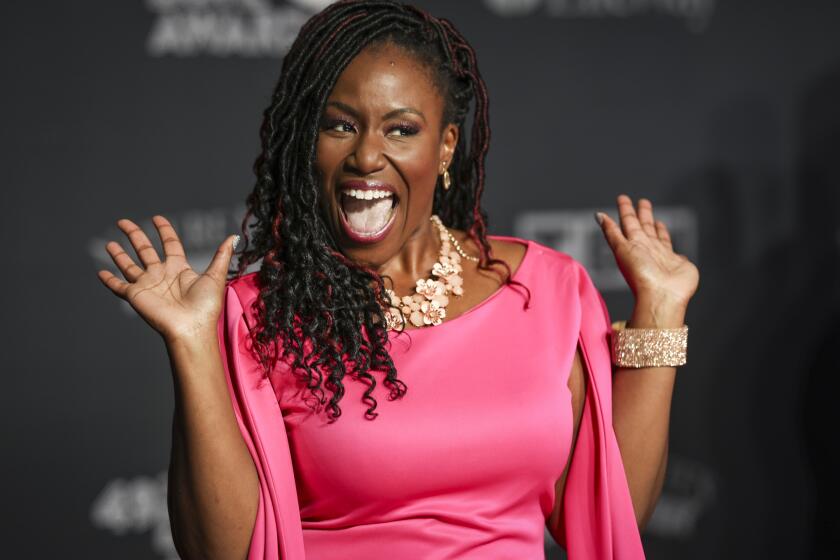HBO’s ‘Getting On’ may hit a little too close to the home
Most of the actors on the set of HBO’s newest program, “Getting On,” are over 70. The show, which premieres Sunday, takes place in the Billy Barnes Extended Care Unit of the beleaguered Mt. Palms hospital in Long Beach.
Elderly women are cared for under sallow fluorescent lights among sanitized hues of beige and muted pink. The staff is at the breaking point thanks to the burdens of the healthcare bureaucracy.
Doesn’t that sound funny?
If you take your comedy black, like your coffee, it’s a laugh riot. Created by Mark V. Olsen and Will Scheffer, “Getting On” is adapted from a BBC series of the same name. It features a cast of edgy female comedy vets including Laurie Metcalf (“Roseanne”), Alex Borstein (“Family Guy”) and Niecy Nash (“Reno 911!”).
PHOTOS: Behind the scenes look of ‘Getting On’
Olsen and Scheffer are the team behind the HBO hit “Big Love,” which dealt with another taboo subject: polygamy. For a polygamy palate cleanser, the men chose aging, the elderly, death and dying. And HBO said, let’s do this.
The show is one of a trio of fall programs that have had the courage — or foolhardiness — to take on a topic that much of American culture famously avoids. In addition to “Getting On,” dying also framed Showtime’s documentary series “Time of Death,” which unflinchingly chronicled the last days of its subjects, and Netflix’s scripted drama “Derek,” where the specter of death hovers over the residents of an old folks home.
It’s no accident these programs sprouted up on subscription TV services where niche shows can thrive and ratings matter less. But are viewers, many of them baby boomers who will all be 50 or older next year, ready to face their mortality?
“How do you deal with old people who are dying and deal with those themes, and then make an audience want to go there with you?” Scheffer asks. “If it’s really close to us, how do we heal? By laughing about it.”
PHOTOS: Walter White, Dexter and really good bad guys
Scheffer and Olsen hope that the viewing world will laugh with them. But historically speaking, when treated realistically, the end days of life is a ratings-killer.
“The closer you get to being elderly and/or dying, the less interesting you are for advertisers, except for sellers of walk-in bathtubs and the Neptune Society,” says Leo Braudy, a Bing professor of English and American literature at USC. “And why would people who will soon be in an extended-care ward want to watch other people in an extended-care ward?”
Olsen and Scheffer are both boomers and lost their mothers in the last two years. Both women were in boarding-care facilities, so the men are all too familiar with what it’s like.
“Is it really that daring? Is it really that different?” asks Olsen on the set of “Getting On” earlier this year. “The answer outside the bubble is, ‘Yes it is.’ But to us living inside the bubble, it seems as common as day.”
PHOTOS: ‘Walking Dead’ and the many meanings of zombies
The six-episode season was filmed in the deserted shell of St. Luke Medical Center in Pasadena. Empty, drafty and derelict, like the hospital version of “The Shining” hotel, St. Luke became the show’s nerve center. One wing is set-dressed with ominous implements of medical care: rows of adjustable beds, twisted black cords attached to flashing boxes for monitoring hearts, cheap plastic trays, bowls crusted with old oatmeal, bed pans, jars of Vaseline and bottles of baby powder.
Olsen and Scheffer, who were domestic partners for nearly 20 years before getting married, nonchalantly navigate the disquieting space and are deferential to their elderly extras. The most difficult thing about making “Getting On,” after all, is taking audiences into a world that makes many people uncomfortable without being exploitive.
“I think the potential is for trivializing the conditions, experiences and lives of the people and families that are cared for in chronic-care units,” says Lon S. Schneider, a professor of gerontology at USC’s Davis School of Gerontology. “And of possibly glamorizing and almost romanticizing the kind of jobs that the professionals at these places do. These are products of a remarkably broken healthcare system.”
Olsen, Scheffer and the cast have given that pitfall serious thought. Before filming began, the lead actresses spent two weeks trailing staff in nursing homes and hospitals, and the writing does not shy away from the troubling aspects of the work.
Borstein’s character, Nurse Dawn, is overextended and erratic. She’s torn between her desire to be good to the women in her care and a need to live up to rigid corporate expectations. She is shown texting while a patient passes quietly away early on in the show.
“It’s such a fine line, what we’re doing,” Borstein says. “We need Mark and Will to tell us if we go too far. Now it feels like you’re exploiting someone, now it feels cheap to be cheap, there’s an art to making this right.”
Metcalf plays Dr. Jenna James, a burned-out physician who feels insulted by her assignment to the Billy Barnes unit. She wanted to be a medical-research star and is obsessed with collecting and analyzing feces, an ongoing metaphor for the show’s bleak environment. The correct way to pick up an errant sample off a waiting room chair dominates an entire episode.
Only Nash’s character, Nurse DiDi, seems normal, but her kindness and pragmatism go largely unnoticed by her co-workers.
TALKING TV: Why ‘The Good Wife’ keeps getting better
“I feel like the gift God gave me was the ability to make everything funny,” Nash says. “I’m not proud of the fact that I chuckle at funerals, that I find the funny in a sad or dark moment, but that’s what this is about.”
Scheffer calls the show a “docu-comedy” because it’s filmed in an off-the-cuff manner with cameras following the characters around as they experiment with blocking and occasionally improv lines. And, in what many would consider heretical by Hollywood standards, the actors do not get their hair or makeup done. The existing overhead fluorescent bulbs serve as the only lighting set up.
“The three of us have joked that we are three of the bravest actresses in TV right now with no hair and no makeup,” Metcalf says. “It’s a luxury to not have to worry about it, but it’s also a kick in the face — being willing to look like you’ve had a hard day on your feet.”
“This show is really about faces and hearts,” says Olsen, adding that getting actresses to audition without makeup was a true challenge. “There is such beauty in those unadorned faces. The beauty of seeing life’s struggle on those faces is so much of what this show is about.”
--------------------------
‘Getting On’
Where: HBO
When: 10 p.m. Sunday
Rating: TV-MA (may be unsuitable for children under the age of 17)
More to Read
The complete guide to home viewing
Get Screen Gab for everything about the TV shows and streaming movies everyone’s talking about.
You may occasionally receive promotional content from the Los Angeles Times.
